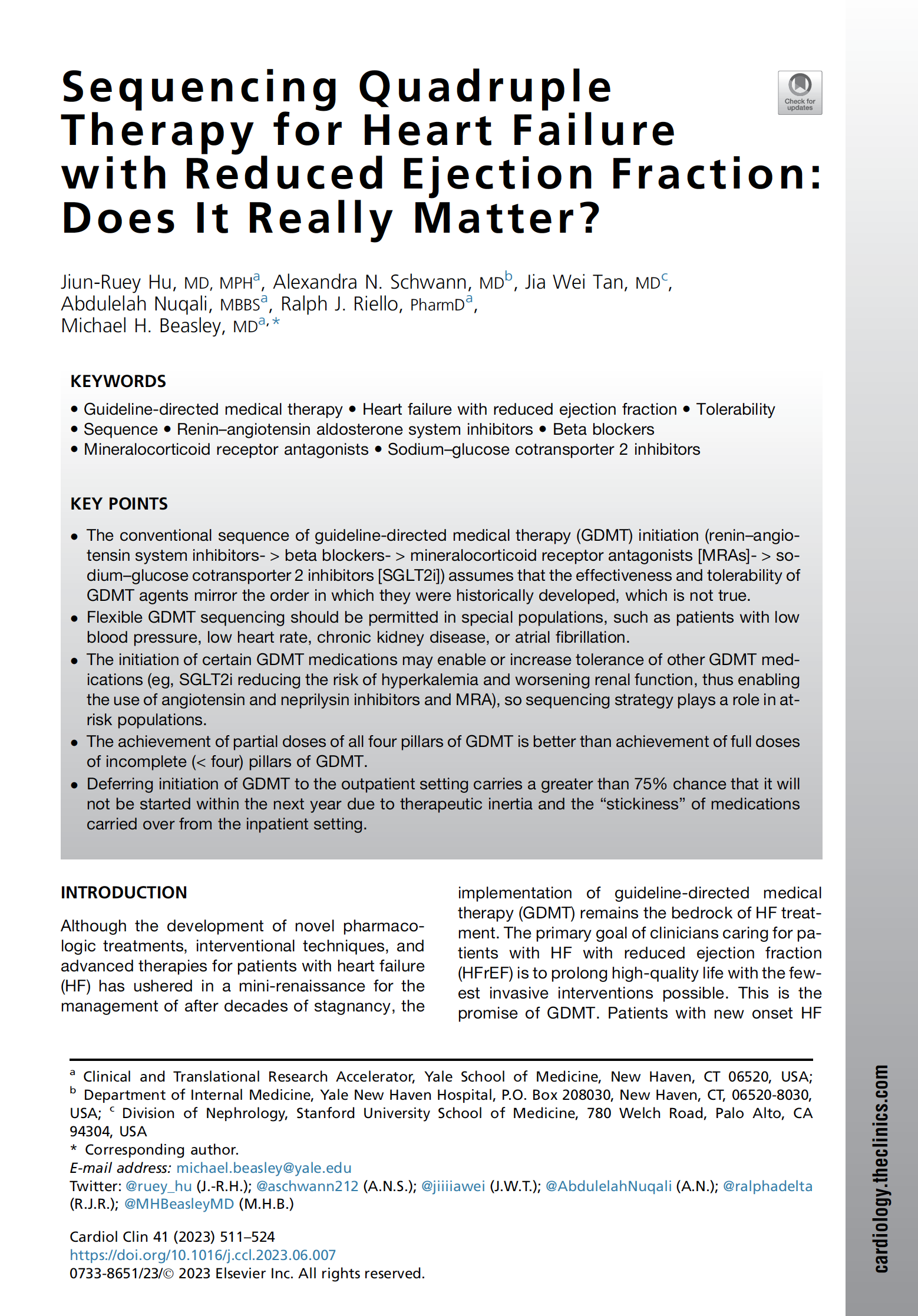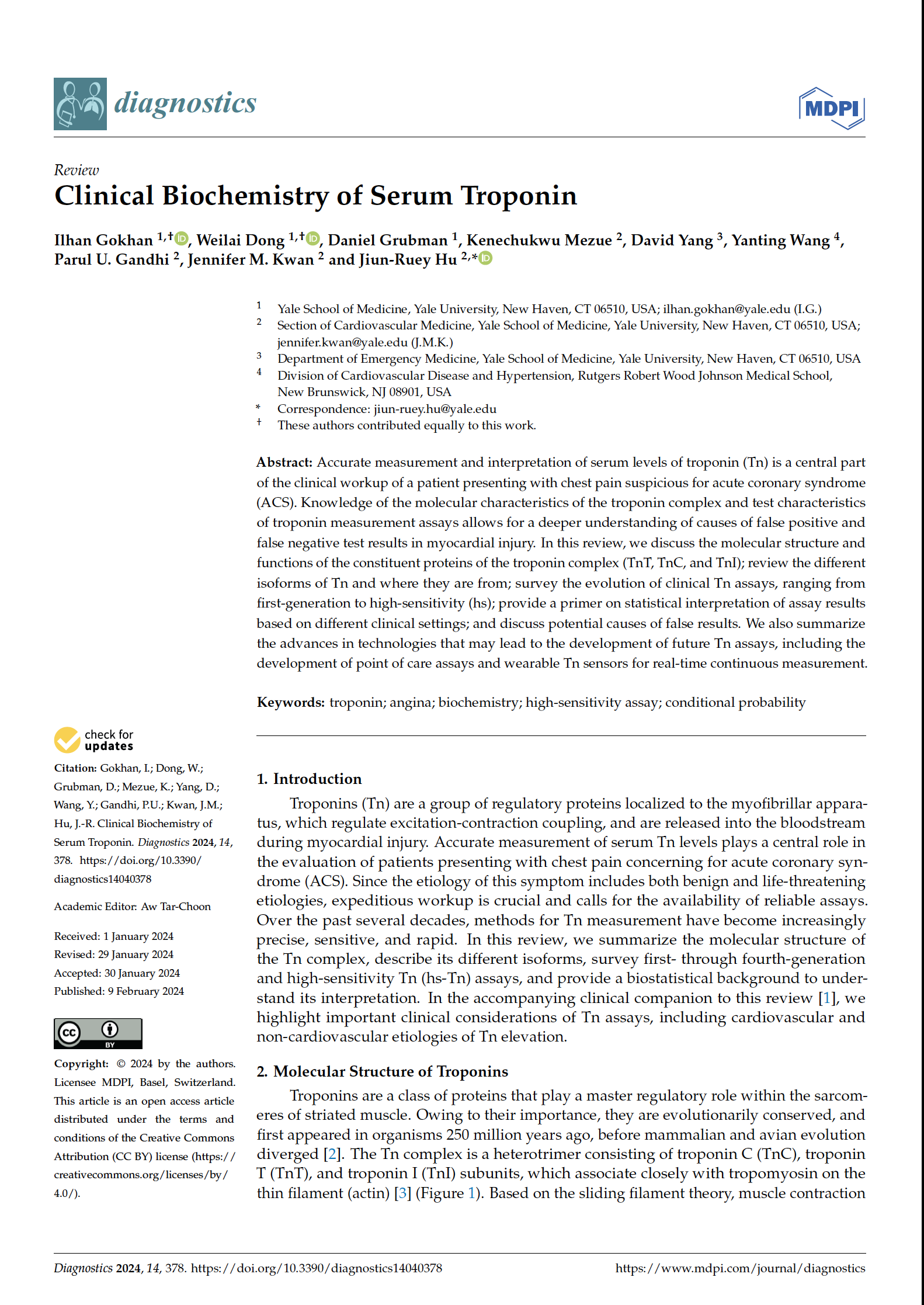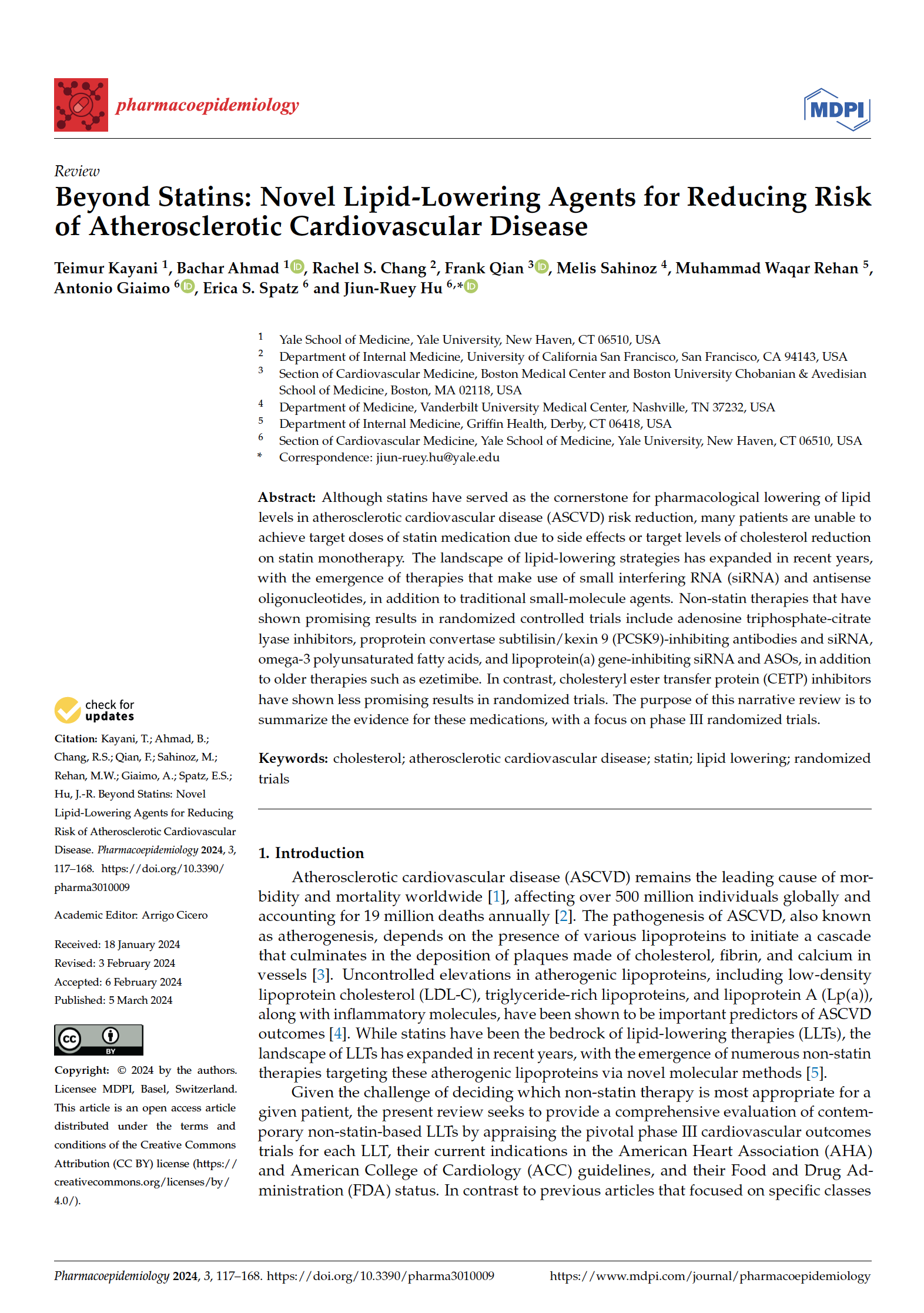📝 Abstract
The conventional sequence of guideline-directed medical therapy (GDMT) initiation (renin–angiotensin system inhibitors- > beta blockers- > mineralocorticoid receptor antagonists [MRAs]- > sodium–glucose cotransporter 2 inhibitors [SGLT2i]) assumes that the effectiveness and tolerability of GDMT agents mirror the order in which they were historically developed, which is not true.
Flexible GDMT sequencing should be permitted in special populations, such as patients with low blood pressure, low heart rate, chronic kidney disease, or atrial fibrillation.
The initiation of certain GDMT medications may enable or increase tolerance of other GDMT medications (eg, SGLT2i reducing the risk of hyperkalemia and worsening renal function, thus enabling the use of angiotensin and neprilysin inhibitors and MRA), so sequencing strategy plays a role in at-risk populations.
The achievement of partial doses of all four pillars of GDMT is better than achievement of full doses of incomplete (< four) pillars of GDMT.
Deferring initiation of GDMT to the outpatient setting carries a greater than 75% chance that it will not be started within the next year due to therapeutic inertia and the “stickiness” of medications carried over from the inpatient setting.


